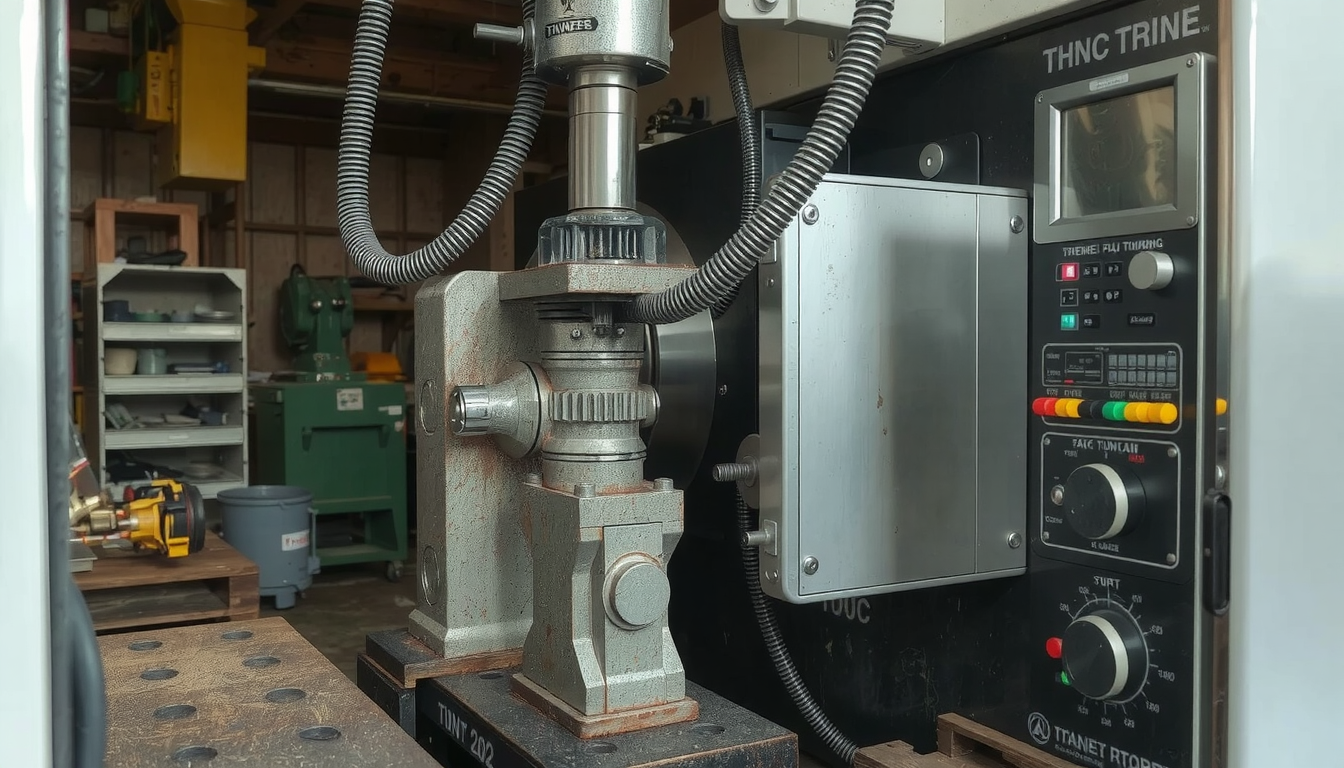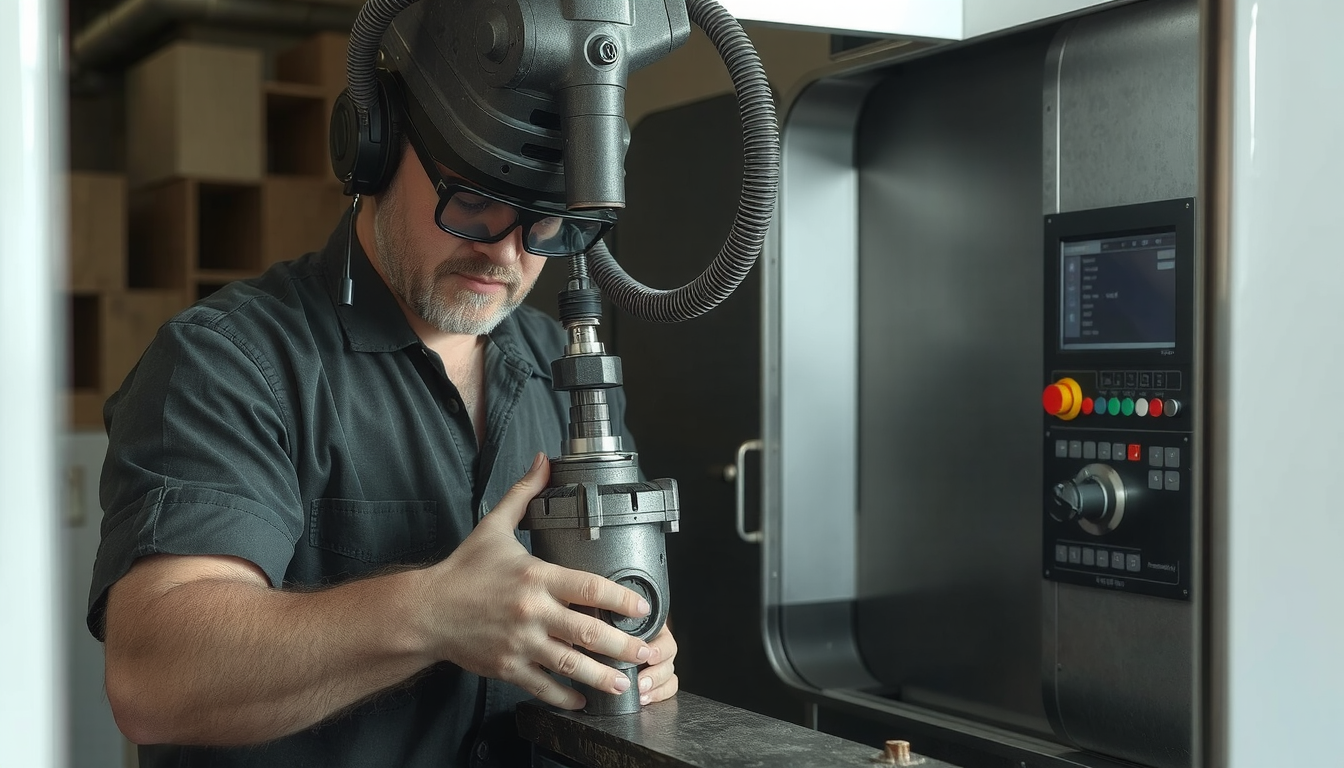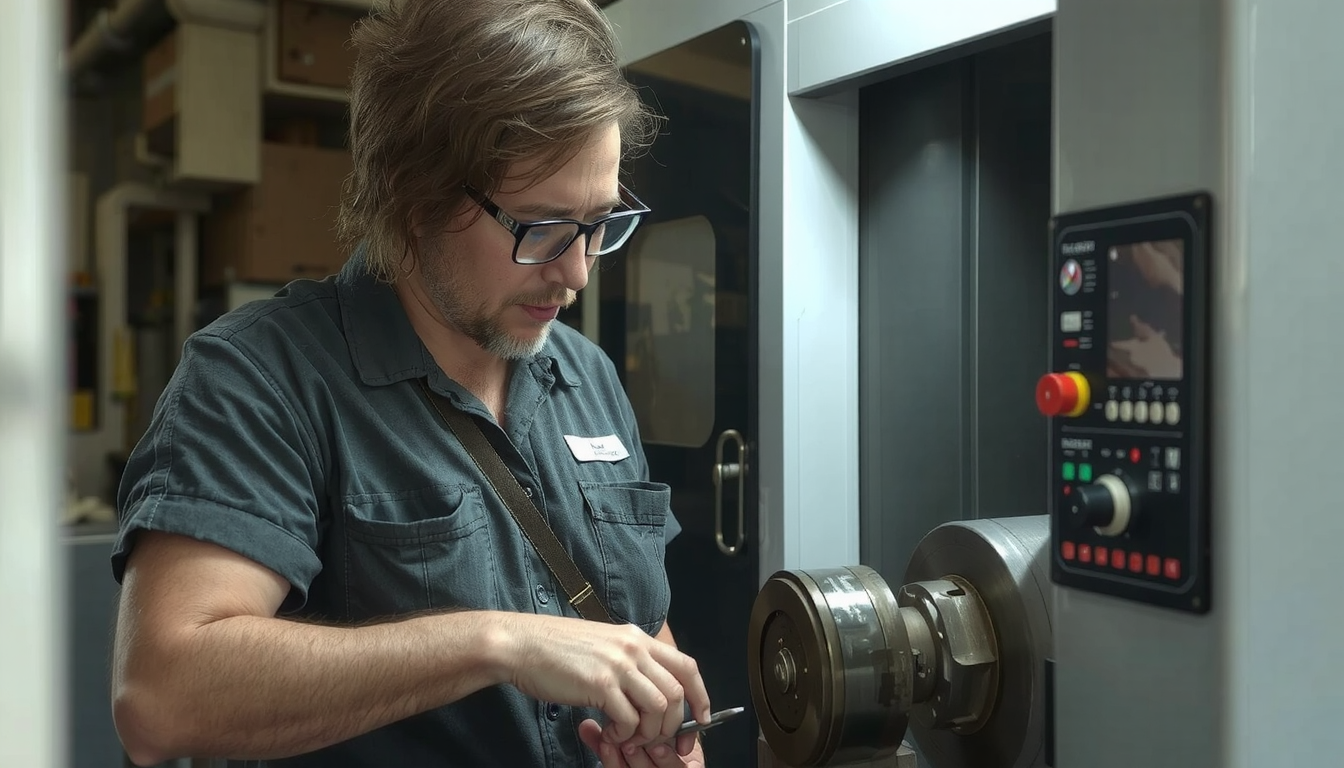Introduction: The Contemporary Digital Craftsman

A CNC turner is someone who is skilled and utilizes a computer-controlled machine called CNC Lathes to turn raw materials, like metals, and plastics, into precision-finished parts, with the use of a computer. This job is a blend of computer technical skills with manual work.
The profession of the CNC turner is crucial in modern manufacturing. They can be found making parts for all sorts of products, including automobiles, planes, and medical gadgets. As a company that specializes in precision manufacturing, we at Mekalite are well aware that CNC turners are the very foundation of the industry. They realize the digital designs of these parts into physical, functional parts with great accuracy.
The Main Tasks of a CNC Turner
To know what a CNC turner does, one has to consider the jobs they do daily. It often involves more than just pushing a button; it involves many steps to engineer a part fully.
A turner’s design is to see to it that a part gets produced right and in a timely manner. This is supported by the full list of core objectives and responsibilities that relate to him/her.
Below are the major responsibilities:
- Blueprint Reading & Programming: Turners get started with the help of a technical drawing, or blueprint. This includes reading and understanding dimensions and notes about the material. After this, they load, edit, or sometimes write the G-code and M-code programs that control the CNC machine’s movements.
- Machine Setup: Before a job can run, the machine must be prepared. It is important to pick the right cutting tools and installing them in the machine’s turret. The turner also sets up fixtures, like chucks or collets, to securely hold the raw material, known as the workpiece.
- Operation & Monitoring: The turner runs the machine as soon as the setup is complete. They pay close attention to the cutting process as the machine executes the part. During the process, they watch for tool wear and listen for any odd vibrations. They may also adjust speeds and feeds to improve the cut.

- Quality Control & Inspection: The first part of the batch is like a test piece. The CNC turner uses high-precision measuring tools like digital calipers, micrometers, and gauges to make sure everything is correct to the model. They check the quality of the parts with the same measuring system throughout the running process.
- Maintenance & Troubleshooting: The machine maintenance is one of the key tasks to maintain good production levels performed by the turners. It usually consists of cleaning the machine, checking the oil levels, and clearing chips. They also troubleshoot and solve minor problems to prevent long delays.
The CNC Turning Process Explained
CNC turning is a subtractive machining process, which is like the work of a CNC turner. It involves a big metal bar being cut down to the right shape. The CNC lathe machine does this by rotating the workpiece so that a fixed cutting tool can move along it, taking away the material.
This method is ideal for the production of parts that have a round or cylindrical shape. With cylindrical shapes, the most common examples would be pins, shafts, rings, and threaded bolts. A turner uses specific operations to create different features. Facing creates a flat surface on the end of a part. Grooving cuts a channel into the part. Threading creates the spiral ridges for screws and bolts.
This process is a detailed and intricate way to manufacture custom parts. This process is also necessary for the production of a large selection of cylindrical parts that are typically associated with professional Servicios de torneado CNC.
A Day in the Life of a CNC Turner
To get a better idea of what CNC turners do, a walk through a typical day would be really helpful. The job is basically a mixture of planning, hands-on work, and careful monitoring.
Morning (7:00 AM): The day starts off with a handover between shifts. The turner has to meet with the operator from the previous shift to get some insights about the work and potential issues. The production schedule is then reviewed to see the articles planned for the day. After that, they make sure that their assigned machine is ready to use.
First Job (7:30 AM): The turner receives a job packet for a new part. This packet includes the blueprint and work order. Today’s first task is a batch of 50 stainless steel pins. The turner carefully studies the blueprint to understand every dimension and tolerance.

Setup (8:00 AM): Now it’s time to set up the CNC lathe. The turner selects the correct collet to hold the round bar of stainless steel. They load the material into the machine’s bar feeder. Next, they install the necessary tools into the turret. This includes a turning tool for the outside diameter, a grooving tool, and a parting tool to cut the finished pin from the bar. Each tool is carefully touched off to set its exact position in the machine’s computer.
First-Off (9:30 AM): Safety first! The turner runs the program in the single-block mode first. Only one line of code can be executed by the machine after the turner confirms the safety of tool paths. The turner then overrides the program to run one complete part, called the first-off inspection piece. He/She takes it to the inspection bench and uses a micrometer and other gauges to check every dimension against the blueprint.
Production Run (10:00 AM – 3:00 PM): The first part is perfect. The quality control department approves it, and the full production run begins. The machine now runs automatically, but the turner’s job is not over. They monitor the machine and listen for changes in sound that might signal a dull tool. They perform spot checks on parts every 30 minutes. They may make tiny adjustments to the tool offsets to account for machine temperature changes.
End of Day (3:30 PM): The job is done. The turner cleans up the machine by removing chips and through wiping down the surface. They note the number of produced good parts and the issues they encountered. Finally, they prepare the machine for the next shift, ensuring a smooth handover.
Essential Skills and Qualifications to Become a CNC Turner
The success as a CNC turner largely depends on the combination of the technical knowledge that a person has and the personal traits he/she possesses. Knowledge and traits are both necessary for coping with the challenges in the precision manufacturing environment.
| Hard Skills | Soft Skills |
|---|---|
| Blueprint Reading | Strong Attention to Detail |
| G-Code/M-Code Programming | Problem-Solving Abilities |
| Proficiency with Measuring Instruments | Mechanical Aptitude |
| Machine Setup and Operation | Ability to Work Independently |
| Basic Shop Math (Geometry, Trigonometry) | Time Management & Communication |
Most CNC turners get their start through a few common pathways. Many attend a vocational or technical school to earn a certificate or associate’s degree in machine tool technology. Apprenticeships are another excellent route, offering paid on-the-job training alongside classroom instruction. Some people start as machine operators and learn the necessary skills through on-the-job training.
Certifications, such as those from the National Institute for Metalworking Skills (NIMS), can also prove your abilities to employers. The demand for skilled machinists remains steady. According to the U.S. Bureau of Labor Statistics, the field requires a steady flow of new talent to replace retired workers. This ensures continued opportunities.
The Career Path and Future for a CNC Turner

Getting a job as a CNC turner is not just joining a workforce, but it is also the beginning of a long-term career with various opportunities for growth. The skills are valuable, which may lead a person to hold a higher position in a manufacturing company.
Level 1: CNC Operator/Turner
The operator level focuses on doing the production jobs set and running them. He/she is a person who loads material, starts the machine and runs the basic quality checks. In this way, the operator establishes knowledge about the CNC turner work.
Level 2: CNC Setter/Programmer
A turner eventually gets promoted to the setter or programmer’s position. This post says more, it implies responsibility. A setter is fine at performing complex machine setups for new jobs. A programmer is skilled at writing G-code programs from scratch and optimizing them for speed and quality.
Level 3: Senior Machinist / Team Lead / Shop Foreman
Experienced turners can progress to the managing positions. The team lead or shop foreman can supervise other machinists, schedule jobs, troubleshoot difficult technical problems and ensure that the whole shop is running efficiently.
Especializaciones
Also, a CNC turner can choose to specialize in other related fields. Some of them move into Quality Control Inspection and become metrology experts. Others become CAM Programmers, programming software for creating complex toolpaths. Some even switch to Manufacturing Engineering, where they design the processes used to make products. The future of skilled turners is bright, as more automation requires experts who can manage and troubleshoot advanced technology.
Tools of the Trade: The CNC Turner’s Workshop
The CNC turner is a professional who works using very sophisticated machines and exact instruments. The CNC Lathe or a CNC Turning Center is the most important and central piece of machinery. Both machines manufacture parts by rotating a workpiece and cutting it with a tool.
The main point of a CNC lathe vs. a CNC turning center is the difference in capability in technology, which is what they can do. A turning center is often more advanced. It may even include live tooling, meaning that it can also use rotating tools like drills or mills to create features on a part in one setup.
Aside from the main machine, a turner uses a variety of other important tools every day. These are:
- Digital Calipers and Micrometers for precise measurements.
- Deburring Tools to remove sharp edges from finished parts.
- Tool Holders to secure cutting inserts.
- Gauges of various types to check threads and diameters.
Frequently Asked Questions (FAQ)
Is being a CNC turner a difficult job?
It is a highly skilled craft that demands precision and problem-solving. The job can be physically tough as standing for hours is often required. Nevertheless, most of the challenges are mental. You have to read complex blueprints, troubleshoot machine problems, and keep your focus on holding tight tolerances.
What is the difference between a CNC turner and a CNC machinist?
The terms are often used interchangeably. However, “CNC Turner” is more specific. It is a term that means a person who is concerned with operating CNC lathes. “CNC Machinist” is instead a wider term that can include turners together with people who operate CNC milling machines, grinders, or other equipment.
Do you need to be good at math to be a CNC turner?
A strong understanding of mathematics is important. A CNC turner needs geometry and trigonometry on a regular basis. They are required to work out angles, positions, and dimensions from blueprints. This is practical math at play rather than mathematics in the abstract.
What is the typical work environment for a CNC turner?
A CNC turner works in a machine shop or a manufacturing plant. These places can be noisy. The job often requires standing for most of the shift. Safety is the top priority, so wearing personal protective equipment (PPE) like safety glasses is always required. Modern shops are often clean, well-lit, and climate-controlled.
What is the average salary for a CNC turner?
Salaries can vary significantly depending on several factors. These include the operator’s experience, skill level, and geographic location. Less than an entry-level operator will earn an experienced setter, who can code, more. It is universally recognized that this is a highly-paying skilled trade. The potential for income growth through the gaining of new expertise is strong.
Conclusion: The Unending Worth of a Turner Master
In sum, CNC turners invariably do much more than just machine operating. They are modern craftsmen, problem solvers, and indeed, an indispensable link in the chain of manufacturing. The technical skill is harmonized with meticulous attention to detail to construct technology in the world around us.

